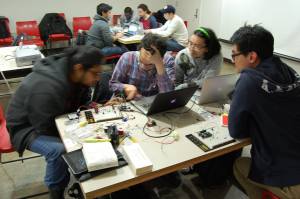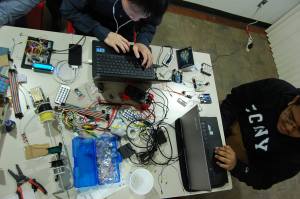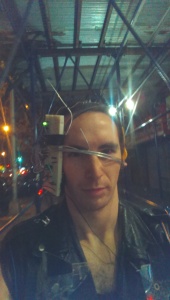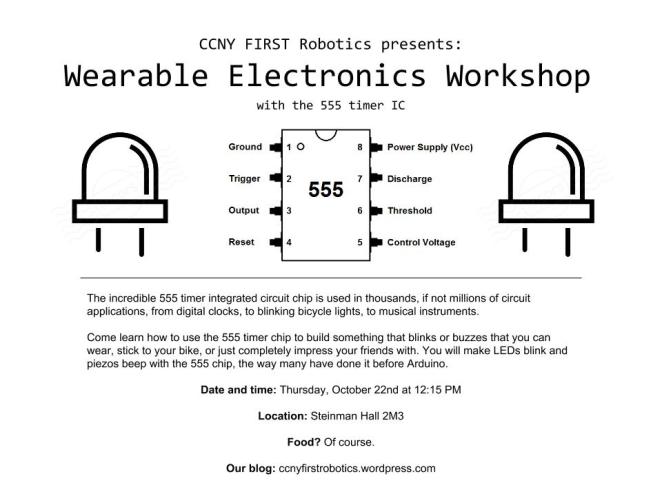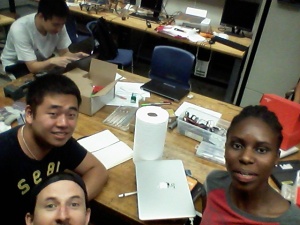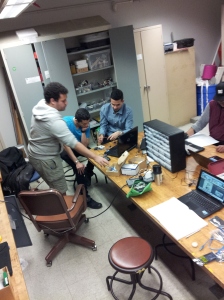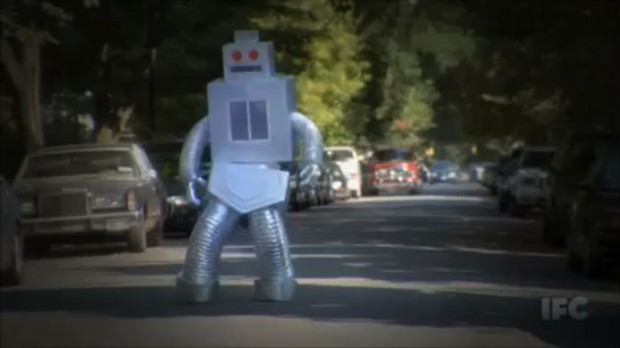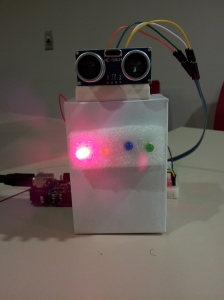Over the last two Fridays, a collective of CCNY science groups, the Clubs of Grove, held a microcontroller programming training workshop and hackathon in the Steinman Building. During the training session, students went through an hour-long training presentation and then were assigned different tasks to program and build.
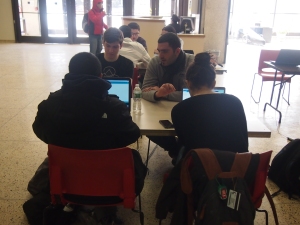

Students were broken up into teams to work on their tasks. Building tasks started simple, and then increased in difficulty. For instance, students had to use a photoresistor to control the brightness of an LED. However, even starting with these simple tasks gave students a chance to learn about electronics prototyping hardware like breadboards, through-hole resistors, LEDs, and other sensing components.


Eventually teams had to figure out how to use more sophisticated components like ultrasonic sensors, temperature sensors, and different types of motors. It was a crash course in prototyping and programming. No experience was necessary to participate, and there were things to do for makers of all skill levels.

The following Friday, February 27th, there was a hackathon, in which teams were assigned build a project in response to a theme. The theme was “home improvement,” and the competition was fierce, merciless, and fun, of course.
The team of Yours Truly contemplated several types of home improvement projects. First we ruled out trying to do “obvious” projects, like using sensors to turn on lights, using a temperature sensor to control apartment heat, and other projects we thought others would think of.
Eventually, we decided that a refrigerator was the device in the home that consumed the most energy, and it would be useful to create a more energy efficient refrigerator. Our fridge would have many energy-saving features. First, it would be connected to a wall of the apartment adjacent to the outdoors, so it would be able to use cold air directly in the refrigeration chambers, when the air outside was cold enough. For instance, in the suburbs where people have garages, many people store food in their cold garages in the winter. Free refrigeration!
Also, our fridge would have separate compartments for refrigerating food. For instance, is your fridge “full” all of the time? Perhaps you only need half the space in your fridge to chill all your food. In our fridge, the main compartment would be broken up into three different areas. The shelf of each compartment would also be pressure sensitive, so that if there was no food in that compartment, the compartment would not be cooled, thereby saving energy. Also, each compartment base would rotate to allow uses to evenly distribute their food for proper chilling. And finally, to open each compartment, the user would only have to open a small door, maybe 1/3 the size of a full fridge door. This would allow less cool air to escape during each opening.
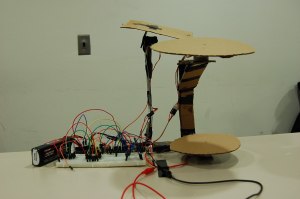
It’s a refrigerator. Can’t you tell?

The competition building a disco house.
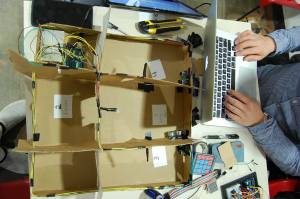
Each room is triggered with sensors to activate a lighting system. Prototyping cardboard courtesy of Domino’s Pizza.
In the end, we came in second place. We lagged behind in points for “Business Potential” and Team 3/4/2’s home security system with “Intruder Rave Alert” beat us out. Well, hey, there’s always next build!

